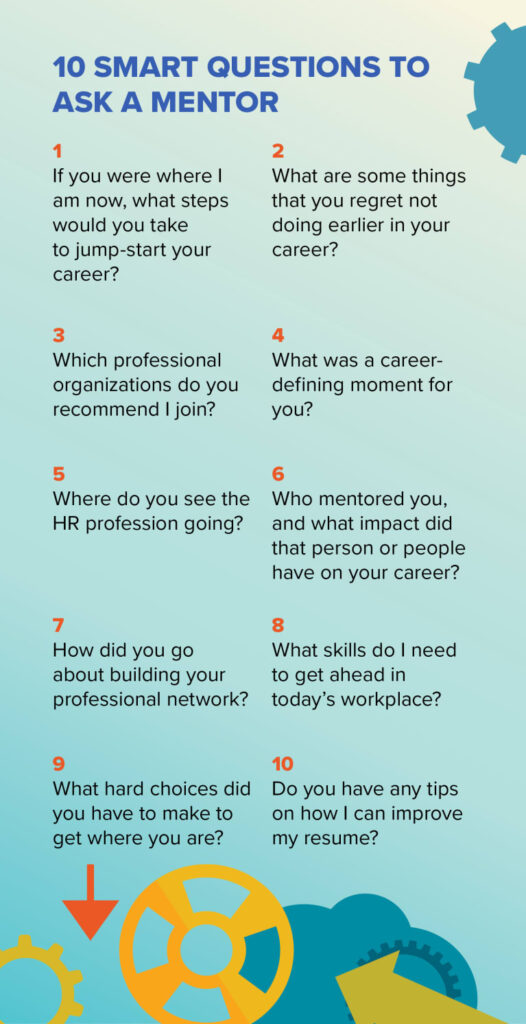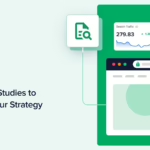In today’s fast-paced world, personal growth has become more important than ever. Whether you’re striving for career advancement, improved relationships, or simply a better version of yourself, understanding the principles of self-improvement can transform your life. This article delves deep into the concepts shared in a popular Twitter thread, exploring actionable strategies, real-world examples, and expert insights to help you unlock your full potential.
Introduction: Why Personal Growth Matters
Personal growth is not just about achieving goals; it’s about becoming the best version of yourself. It involves continuous learning, adapting to change, and embracing challenges with resilience. In an era where technology evolves rapidly and societal expectations shift constantly, staying stagnant is no longer an option. Those who invest in their personal development are better equipped to navigate uncertainty, seize opportunities, and create meaningful impact.
This article will cover:
- The importance of mindset and habits.
- Strategies for overcoming obstacles.
- Building strong networks and leveraging mentorship.
- Practical tips for maintaining motivation and accountability.
By the end, you’ll have a roadmap for transforming your life through intentional effort and strategic planning.
Chapter 1: Mindset – The Foundation of Growth
Your mindset shapes how you perceive challenges, interpret failures, and approach opportunities. Developing a growth-oriented mindset is essential for long-term success.
Fixed vs. Growth Mindset
Psychologist Carol Dweck introduced the concept of fixed versus growth mindsets. Individuals with a fixed mindset believe their abilities are innate and unchangeable, whereas those with a growth mindset see skills as malleable and capable of improvement through effort.
Key Characteristics of a Growth Mindset
- Embracing challenges as opportunities to learn.
- Viewing failure as part of the process rather than a reflection of ability.
- Seeking feedback to improve continuously.
- Finding inspiration in others’ successes instead of feeling threatened.
How to Cultivate a Growth Mindset
- Reframe Failure : Instead of fearing mistakes, view them as stepping stones toward mastery.
- Celebrate Effort Over Outcome : Focus on the work you put in rather than solely the results.
- Ask Questions : Curiosity fuels learning. Ask “What can I learn from this?” whenever faced with adversity.
- Surround Yourself with Positive Influences : Engage with people who encourage growth and challenge you constructively.
Real-World Example
Consider the story of J.K. Rowling, whose manuscript for Harry Potter was rejected by multiple publishers before finally being accepted. Her persistence and belief in her craft exemplify the power of a growth mindset.
Chapter 2: Habits – The Building Blocks of Success
Habits form the foundation of our daily lives. Small, consistent actions compound over time to produce significant outcomes.
The Science of Habit Formation
According to Charles Duhigg, author of The Power of Habit , every habit follows a three-step loop:
- Cue : The trigger that initiates the behavior.
- Routine : The action itself.
- Reward : The payoff that reinforces the behavior.
Understanding this framework allows us to design effective habits tailored to our goals.
Strategies for Building Good Habits
- Start Small : Break down large objectives into manageable tasks. For example, if you want to read more books, begin with five minutes per day.
- Use Stacking : Link new habits to existing ones. If you already brush your teeth twice daily, add flossing immediately afterward.
- Track Progress : Keep a journal or use apps to monitor your adherence to new routines.
- Be Patient : Change takes time. Celebrate incremental improvements along the way.
Eliminating Bad Habits
To break bad habits, replace them with healthier alternatives. For instance, instead of scrolling social media during breaks, take a short walk or meditate.
Chapter 3: Overcoming Obstacles
Life is filled with roadblocks, but they don’t have to define you. With the right tools and mindset, you can overcome any challenge.
Common Barriers to Growth
- Fear of Failure : Many people avoid taking risks due to fear of rejection or embarrassment.
- Procrastination : Delaying tasks often stems from overwhelm or lack of clarity.
- Self-Doubt : Negative self-talk can hinder progress and prevent action.
Strategies for Resilience
- Visualize Success : Imagine yourself succeeding at your goal. Visualization primes your brain for action.
- Break Tasks into Smaller Steps : Large projects feel less daunting when divided into bite-sized pieces.
- Practice Gratitude : Focusing on what you’re thankful for shifts your perspective and reduces stress.
- Seek Support : Don’t hesitate to ask for help when needed. Mentors, coaches, and peers can provide valuable guidance.
Inspiring Story
Nelson Mandela spent 27 years in prison yet emerged as a symbol of hope and reconciliation. His unwavering determination serves as a testament to the human capacity for resilience.
Inspiring Story: Nelson Mandela’s Journey of Resilience
- Early Life and Activism:
- Born in 1918 in a small village in South Africa.
- Became involved in anti-apartheid activism as a young lawyer.
- Joined the African National Congress (ANC) to fight against racial segregation.
- Arrest and Imprisonment:
- Arrested in 1962 for his involvement in anti-apartheid activities.
- Sentenced to life in prison in 1964 for sabotage and conspiracy against the government.
- Spent 27 years in prison, mostly on Robben Island, under harsh conditions.
- Despite imprisonment, continued to be a symbol of resistance.
- Secretly wrote letters and inspired fellow prisoners to stay hopeful.
- Unbreakable Spirit and Leadership in Prison:
- Used his time in prison to study, reflect, and strengthen his vision.
- Advocated for better conditions for prisoners.
- Maintained a calm and disciplined demeanor, earning the respect of guards and fellow inmates.
- Refused multiple offers of release that came with conditions limiting his political actions.
- Release and Path to Reconciliation:
- Released from prison on February 11, 1990, amid global pressure.
- Instead of seeking revenge, he chose peace and reconciliation.
- Led negotiations to end apartheid and transition South Africa to democracy.
- First Black President of South Africa:
- Elected as South Africa’s first Black president in 1994.
- Focused on healing a divided nation through unity and forgiveness.
- Established the Truth and Reconciliation Commission to address past injustices.
- Legacy of Hope and Inspiration:
- Dedicated his life to promoting peace, human rights, and equality.
- Received the Nobel Peace Prize in 1993 for his efforts.
- Inspired leaders and activists worldwide to fight for justice and reconciliation.
Takeaway:
Nelson Mandela’s story teaches us that resilience, forgiveness, and perseverance can overcome even the most difficult challenges. Instead of holding onto bitterness, he chose unity, proving that true leadership lies in reconciliation and hope.
Chapter 4: Networking and Mentorship
Building strong relationships accelerates personal growth. Surrounding yourself with supportive individuals provides encouragement, knowledge, and opportunities.
Why Networking Matters
Networking expands your horizons by connecting you with people who share similar interests or expertise. These connections can lead to collaborations, job offers, and friendships.
Networking is like building bridges to new opportunities and friendships. Here’s why it’s so important:
- Expands your horizons: Networking connects you with people who share your interests or have expertise in fields you’re curious about. These connections can lead to:
- Collaborations: Working together on projects, sharing ideas, and learning from each other.
- Job offers: Getting introduced to companies or positions you might not have known about otherwise.
- Friendships: Meeting people who understand you and share your passions.
- Tips for effective networking:
- Be genuine: Approach interactions with authenticity and curiosity. People can tell when you’re being fake, so be yourself and show a genuine interest in others.
- Offer value: Think about how you can assist others before asking for favors. This could be as simple as sharing an article they might find interesting or offering to connect them with someone in your network.
- Follow up: After meeting someone, send a thank-you note or connect on LinkedIn. This shows that you value their time and are interested in staying in touch.
- Attend events: Participate in conferences, workshops, and online forums to meet like-minded individuals. These events provide a great opportunity to learn new things and connect with people who share your interests.
Here are some examples of how networking can help you:
- Let’s say you’re interested in becoming a software engineer. By networking with people in the tech industry, you might learn about job openings, get advice on how to improve your skills, or even find a mentor who can guide you in your career.
- Or maybe you’re passionate about environmental issues. By attending a local environmental group’s meeting, you could meet other people who share your passion and find opportunities to get involved in making a difference.
Networking is an essential skill that can help you grow both personally and professionally. By being genuine, offering value, following up, and attending events, you can build a strong network of connections that will support you throughout your life.
Leveraging Mentorship
Mentors offer wisdom gained from experience. They can guide you through difficult decisions, introduce you to influential contacts, and keep you accountable.
Leveraging Mentorship for Personal Growth
Mentorship is a powerful tool for personal and professional development. It involves a relationship where an experienced individual (mentor) guides and supports a less experienced person (mentee) to achieve their goals. By leveraging mentorship, individuals can accelerate their growth, gain valuable insights, and build confidence in their abilities.
How Mentorship Enhances Personal Growth
- Skill Development: Mentors provide tailored advice and share expertise, helping mentees develop new skills or refine existing ones. For example, a young entrepreneur mentored by a seasoned business leader can learn effective strategies for scaling a startup.
- Networking Opportunities: Mentors often introduce mentees to their professional networks, opening doors to new opportunities. A mentee in the tech industry, for instance, might gain access to industry events or job openings through their mentor.
- Increased Confidence: Regular feedback and encouragement from a mentor can boost a mentee’s self-esteem. A study by Sun Microsystems found that mentees were promoted five times more often than those without mentors.
- Goal Clarity: Mentors help mentees set realistic goals and create actionable plans to achieve them. This structured approach ensures steady progress and accountability.
- Emotional Support: Mentors act as sounding boards, offering guidance during challenging times. This support can reduce stress and improve decision-making.
Examples of Successful Mentorship
- Oprah Winfrey credits her teacher, Maya Angelou, as a mentor who shaped her career and personal philosophy.
- Steve Jobs mentored Mark Zuckerberg, providing advice that helped Zuckerberg navigate Facebook’s early growth.
Facts and Statistics
| Statistic | Details |
|---|---|
| Employees with mentors are 20% more likely to get a promotion. | Source: Gartner, 2021 |
| 71% of Fortune 500 companies have mentorship programs. | Source: American Society for Training and Development |
| 89% of mentees go on to mentor others. | Source: Chronus, 2020 |
How to Find a Mentor
- Identify professionals whose careers align with your aspirations.
- Reach out respectfully, expressing admiration for their work and requesting advice.
- Be prepared to demonstrate initiative and commitment.
Identifying Potential Mentors
Start by reflecting on your goals and the areas where you need guidance. Consider professionals whose careers align with your aspirations:
- Look within your current network, including colleagues, supervisors, or industry connections.
- Explore professional organizations or online platforms like LinkedIn.
- Attend industry events or conferences to meet potential mentors.
Reaching Out Effectively
When approaching potential mentors, be respectful and strategic:
- Prepare a concise “elevator pitch” explaining your goals and why you admire their work.
- Request a brief meeting or coffee chat to seek advice, rather than immediately asking for mentorship.
- Be clear about your objectives and how their expertise could benefit you.
Demonstrating Initiative and Commitment
To make the most of mentorship opportunities:
- Come prepared with specific questions and goals for each interaction.
- Follow through on any suggestions or tasks your mentor provides.
- Maintain regular contact and be proactive in scheduling meetings.

Benefits of Mentorship for Personal Growth
Engaging with a mentor can lead to significant personal development:
- Improved communication skills and self-confidence.
- Enhanced problem-solving abilities and resilience.
- Expanded perspectives and increased empathy.
| Aspect of Growth | How Mentorship Helps |
|---|---|
| Career Development | Provides industry insights and guidance on career paths |
| Skill Enhancement | Offers opportunities to learn from experienced professionals |
| Network Expansion | Introduces mentees to valuable connections in their field |
| Personal Development | Encourages self-reflection and goal-setting |
Remember, mentorship is a two-way street. Be open to feedback, show appreciation for your mentor’s time, and look for ways to contribute to the relationship. By actively engaging in mentorship, you’ll not only gain valuable guidance but also develop essential skills that will serve you throughout your career.
Chapter 5: Maintaining Motivation and Accountability
Staying motivated requires intentionality and structure. Without proper systems in place, even the most ambitious plans can falter.
Setting SMART Goals
Ensure your objectives are Specific, Measurable, Achievable, Relevant, and Time-bound. For example:
Instead of saying, “I want to exercise more,” commit to “Workout three times a week for one hour each session.”
Setting SMART goals is a powerful strategy for personal growth and self-improvement. By ensuring your objectives are Specific, Measurable, Achievable, Relevant, and Time-bound, you create a clear roadmap for success.
Benefits of SMART Goals for Personal Growth
- Clarity and Focus: SMART goals provide a clear direction, helping you concentrate your efforts on what truly matters.
- Motivation: Well-defined goals are more motivating, as you can easily track your progress and celebrate small wins.
- Accountability: The measurable aspect of SMART goals allows you to hold yourself accountable for your actions and results.
- Efficiency: Time-bound goals help you prioritize tasks and manage your time more effectively.
Examples of SMART Goals
- Career Development:
“Complete an online leadership course within three months to prepare for a management role.” - Health and Fitness:
“Run a 5K in six months by following a structured training plan and exercising for at least 30 minutes five times a week.” - Personal Development:
“Improve public speaking skills by attending a Toastmasters meeting twice a month for the next six months.” - Financial:
“Save $5,000 for an emergency fund by setting aside $500 monthly for the next 10 months.”
SMART Goal Components
| Component | Description | Example |
|---|---|---|
| Specific | Clear and well-defined | “Increase sales by 10% in Q1” |
| Measurable | Quantifiable progress | “Lose 10 pounds in 3 months” |
| Achievable | Realistic and attainable | “Read one book per month” |
| Relevant | Aligned with overall objectives | “Learn French for upcoming Paris trip” |
| Time-bound | Set deadline or timeframe | “Complete project by June 30th” |
By applying the SMART framework to your goals, you transform vague aspirations into concrete action plans. For instance, instead of saying, “I want to learn a new language,” a SMART goal would be: “Complete a beginner’s Spanish course and practice speaking for 30 minutes daily for the next six months.”
Remember, the key to successful goal-setting is to regularly review and adjust your objectives as needed. As you achieve your SMART goals, you’ll build confidence, develop new skills, and create lasting positive changes in your life. This systematic approach to personal growth ensures that you’re always moving forward, one well-defined step at a time.
Accountability Systems
- Partner Up : Find an accountability buddy who shares your goals.
- Join Groups : Participate in communities focused on personal development.
- Track Results : Use spreadsheets, apps, or journals to record progress.
Combating Burnout
Burnout occurs when demands exceed resources. To prevent it:
- Prioritize rest and recovery.
- Set boundaries between work and personal life.
- Practice mindfulness techniques like meditation or yoga.
Chapter 6: Testing and Adjusting Your Strategy
Continuous improvement relies on experimentation and adaptation. Regularly assess your methods to ensure they remain effective.
Top Three Tests to Validate Initiatives
- A/B Testing : Compare two approaches to determine which yields better results. For example, test different email subject lines to boost open rates.
- Feedback Loops : Solicit input from mentors, colleagues, or customers to refine your tactics.
- Data Analysis : Monitor key metrics to identify trends and areas for optimization.
Adjusting Based on Results
- Double down on strategies that work.
- Eliminate or modify underperforming initiatives.
- Stay flexible and willing to pivot when necessary.
What strategies can help in overcoming common obstacles to growth?
Overcoming obstacles to growth is crucial for businesses to thrive and expand. Here are several effective strategies to address common challenges:
Develop a Strategic Plan
- Conduct thorough market and competition analysis
- Set specific, measurable, achievable, relevant, and time-bound (SMART) goals
- Maintain flexibility to adapt to changing circumstances
- Invest in innovation and technological development
Address Financial Constraints
- Explore alternative funding sources such as venture capital, angel investors, or crowdfunding
- Implement cost-cutting measures to improve cash flow
- Diversify funding sources through grants, loans, and strategic partnerships
- Invest in upgrading technology and equipment to increase efficiency
Tackle Talent Acquisition and Retention
- Develop robust recruiting and training programs
- Offer competitive salaries and benefits
- Create a positive work culture to retain employees
- Focus on developing team competencies to increase flexibility and resilience
Overcome Market Competition
- Differentiate your business by offering unique value propositions
- Build a strong brand image and recognition
- Implement an effective marketing strategy, including digital and social media tactics
- Focus on exceptional customer service
Navigate Regulatory Challenges
- Invest in legal and financial expertise to navigate complex regulations
- Stay informed about changing legal environments
- Develop strategies to comply with new regulations efficiently
Embrace Technology and Innovation
- Invest in automation and digitization to improve business processes
- Explore new marketing tactics, including inbound marketing strategies
- Optimize infrastructure, including IT systems and physical facilities
Build a Support Network
- Collaborate with experts and advisors to identify and overcome barriers
- Cultivate partnerships and networking opportunities within your industry
- Seek mentorship to gain insights and guidance
Maintain a Growth Mindset
- View obstacles as opportunities for innovation and learning
- Develop resilience and grit to persevere through challenges
- Celebrate small wins to maintain motivation
By implementing these strategies, businesses can position themselves to overcome common growth obstacles and achieve long-term success. Remember, the key is to identify barriers early, develop tailored solutions, and remain adaptable in the face of changing market conditions.
Conclusion: Embrace the Journey
Personal growth is a lifelong pursuit. By cultivating a growth mindset, forming positive habits, overcoming obstacles, building strong networks, and maintaining motivation, you can achieve remarkable success. Remember, progress may be slow at times, but consistency wins in the long run.
Personal growth is indeed a lifelong pursuit, and embracing this journey is crucial for continuous self-improvement and success. Here’s a more detailed look at why this mindset is so important:
Cultivating a Growth Mindset
- A growth mindset, coined by psychologist Carol Dweck, believes that abilities and intelligence can be developed through effort, learning, and persistence.
- Research shows that individuals with a growth mindset are more likely to:
- Embrace challenges
- Persist in the face of setbacks
- See effort as a path to mastery
- Learn from criticism
- Find inspiration in others’ success
Forming Positive Habits
- Habits are the foundation of personal growth. According to a study published in the European Journal of Social Psychology, it takes an average of 66 days to form a new habit.
- Key strategies for habit formation:
- Start small and build gradually
- Use habit stacking (linking new habits to existing ones)
- Create a supportive environment
Overcoming Obstacles
- Resilience is crucial for long-term growth. The American Psychological Association defines resilience as “the process of adapting well in the face of adversity, trauma, tragedy, threats, or significant sources of stress.”
- Techniques to build resilience:
- Practice positive self-talk
- Set realistic goals
- Develop problem-solving skills
- Maintain a support network
Building Strong Networks
- A study by the National Institutes of Health found that strong social connections can improve health and increase longevity.
- Networking strategies:
- Attend industry events and conferences
- Engage in online professional communities
- Volunteer for causes you care about
Maintaining Motivation
- Intrinsic motivation (driven by internal rewards) is more sustainable than extrinsic motivation (driven by external rewards).
- Tips for maintaining motivation:
- Set meaningful goals
- Celebrate small wins
- Visualize success
- Practice self-compassion
Remember, personal growth is not a linear process. There will be ups and downs, but consistency and persistence are key. As author James Clear notes in his book “Atomic Habits,” “You do not rise to the level of your goals. You fall to the level of your systems.” By focusing on the process and embracing the journey, you set yourself up for long-term success and fulfilment.
As you embark on this journey, remind yourself of these words by Helen Keller: “Although the world is full of suffering, it is also full of the overcoming of it.”







Leave a Reply